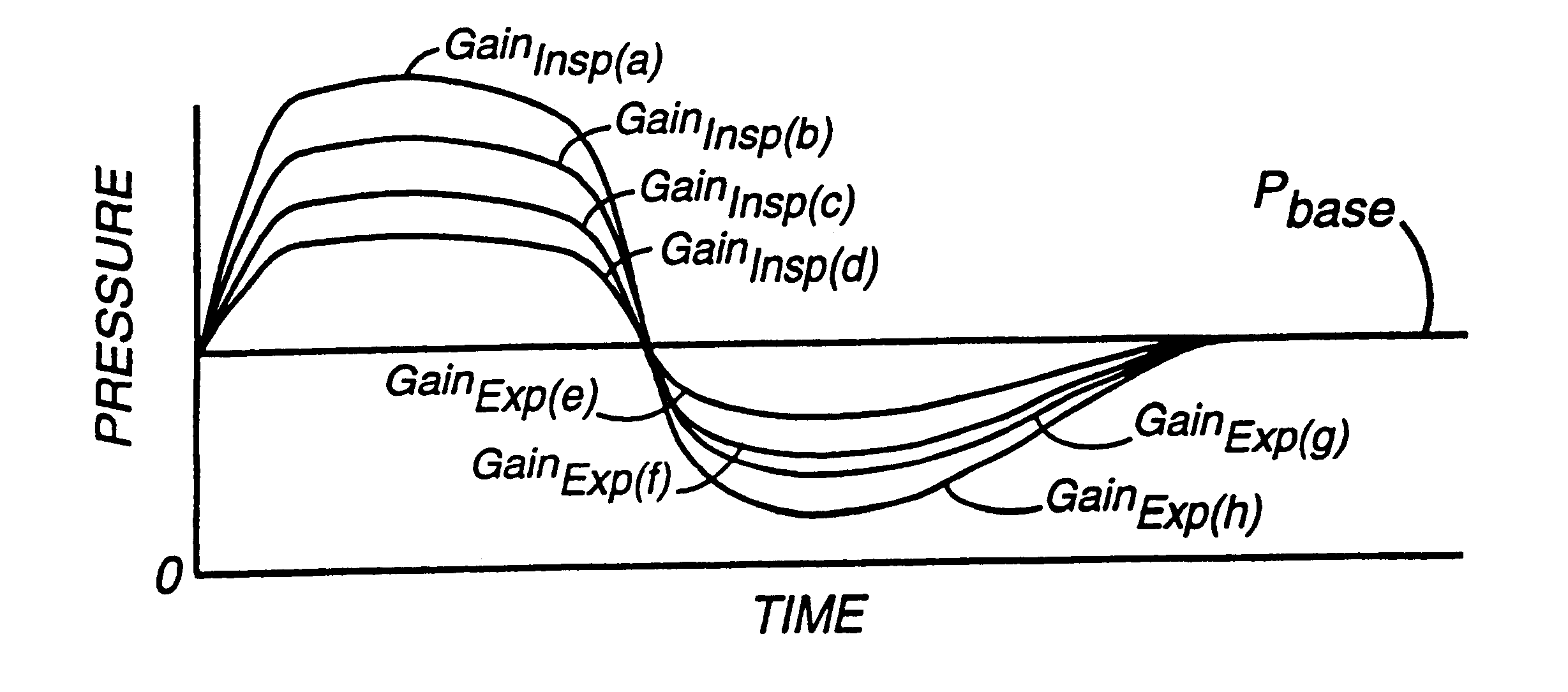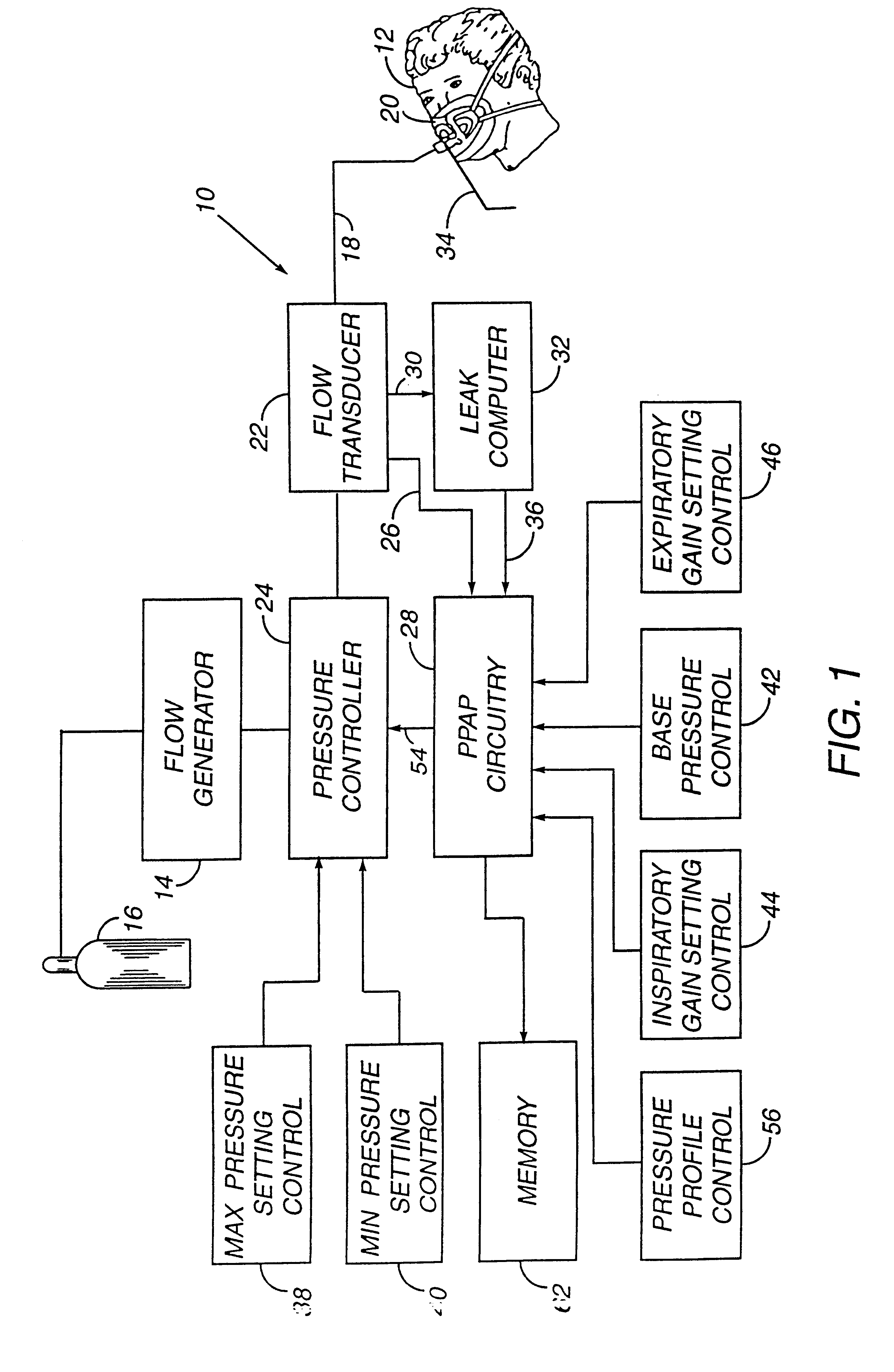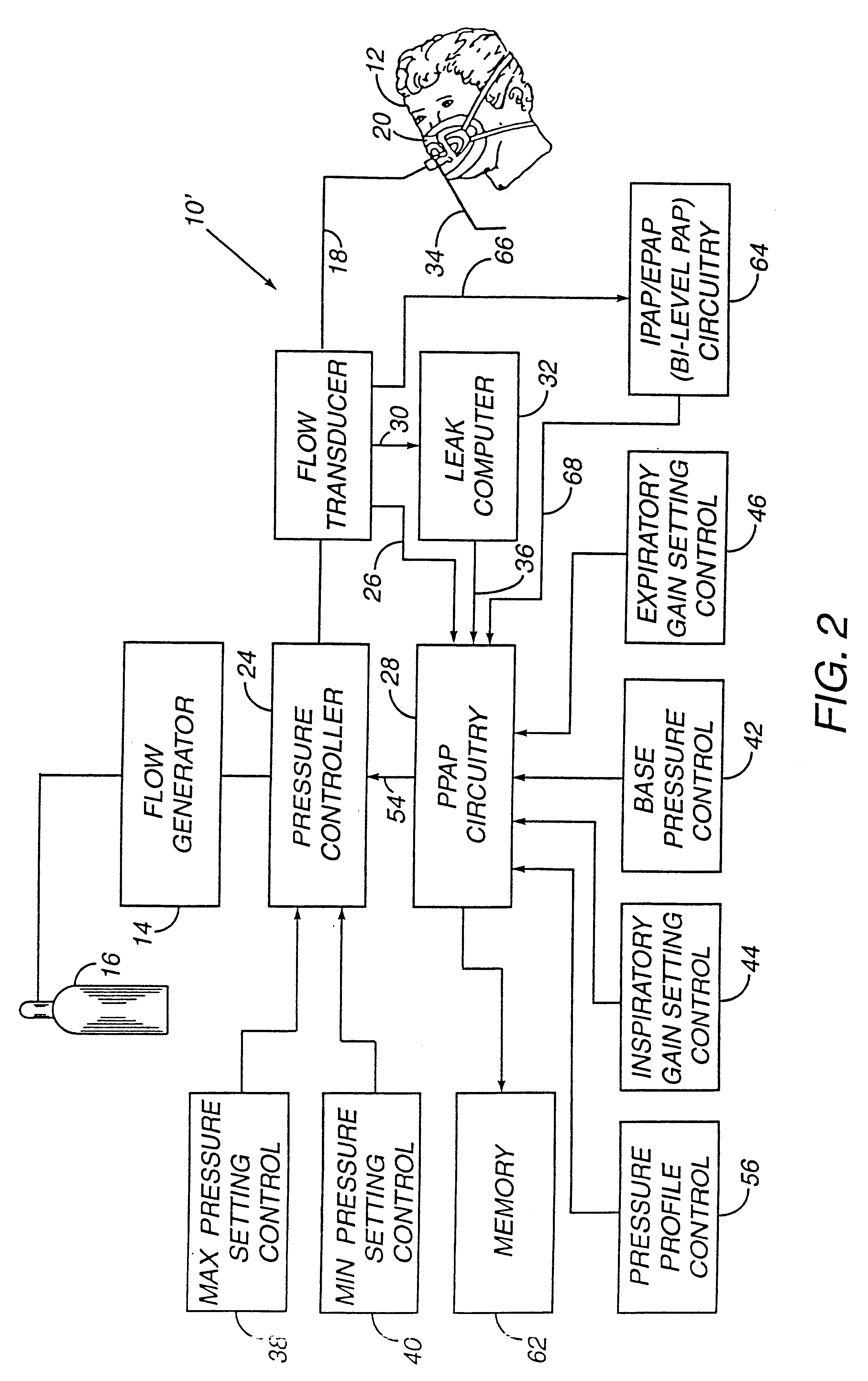Method and apparatus for providing positive airway pressure to a patient
a positive airway pressure and patient technology, applied in the direction of valve details, valve arrangements, life-saving devices, etc., can solve the problems of exposing the patient to pressures that are higher, contributing to the collapse of the patient, and offering far from optimal therapy
- Summary
- Abstract
- Description
- Claims
- Application Information
AI Technical Summary
Benefits of technology
Problems solved by technology
Method used
Image
Examples
Embodiment Construction
There is generally indicated at 10 in FIG. 1 a proportional positive airway pressure apparatus according to a presently preferred embodiment of the instant invention and shown in the form of a functional block diagram. Apparatus 10 is operable according to a novel process to deliver breathing gas, such as air, oxygen or a mixture thereof, at relatively higher and lower pressures (i.e., generally equal to or above ambient atmospheric pressure) to a patient 12 in proportion to the patient's respiratory flow for treatment of OSAS, COPD and other respiratory disorders.
Apparatus 10 includes a gas flow generator 14, such as a conventional CPAP or bi-level PAP blower, i.e., a centrifugal blower with a relatively steep pressure-flow relationship at any constant speed, that receives breathing gas from any suitable source, e.g., a pressurized bottle 16 of oxygen or air, the ambient atmosphere, or a combination thereof. The gas flow from flow generator 14 is passed via a delivery conduit 18 to...
PUM
 Login to View More
Login to View More Abstract
Description
Claims
Application Information
 Login to View More
Login to View More - R&D
- Intellectual Property
- Life Sciences
- Materials
- Tech Scout
- Unparalleled Data Quality
- Higher Quality Content
- 60% Fewer Hallucinations
Browse by: Latest US Patents, China's latest patents, Technical Efficacy Thesaurus, Application Domain, Technology Topic, Popular Technical Reports.
© 2025 PatSnap. All rights reserved.Legal|Privacy policy|Modern Slavery Act Transparency Statement|Sitemap|About US| Contact US: help@patsnap.com



